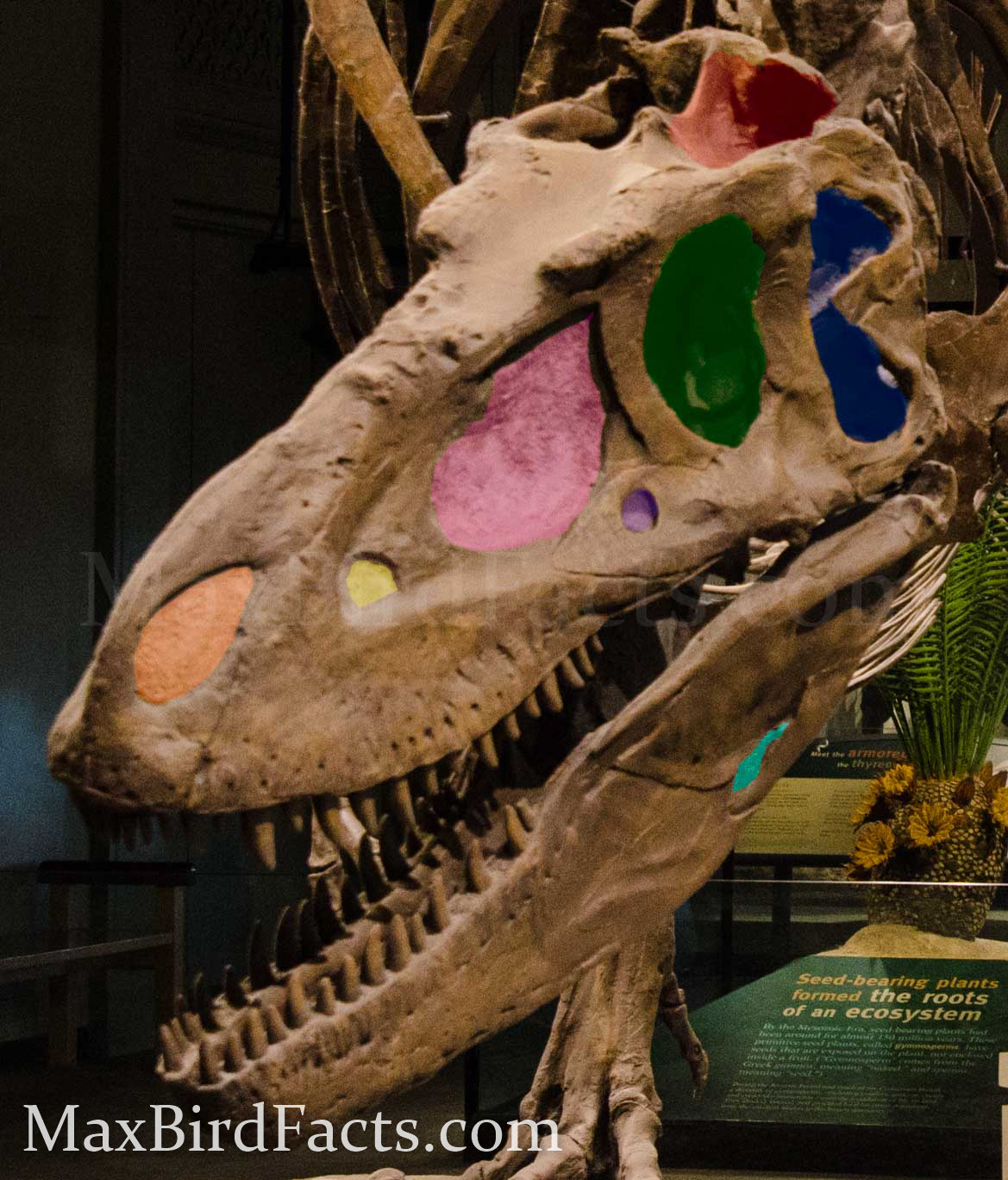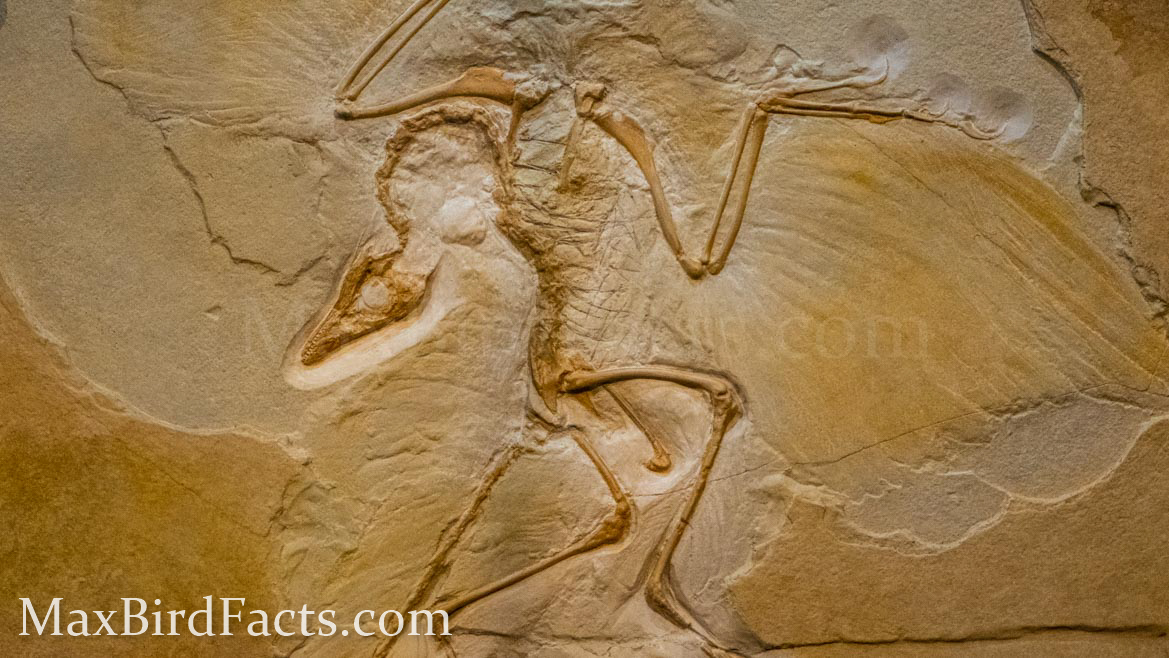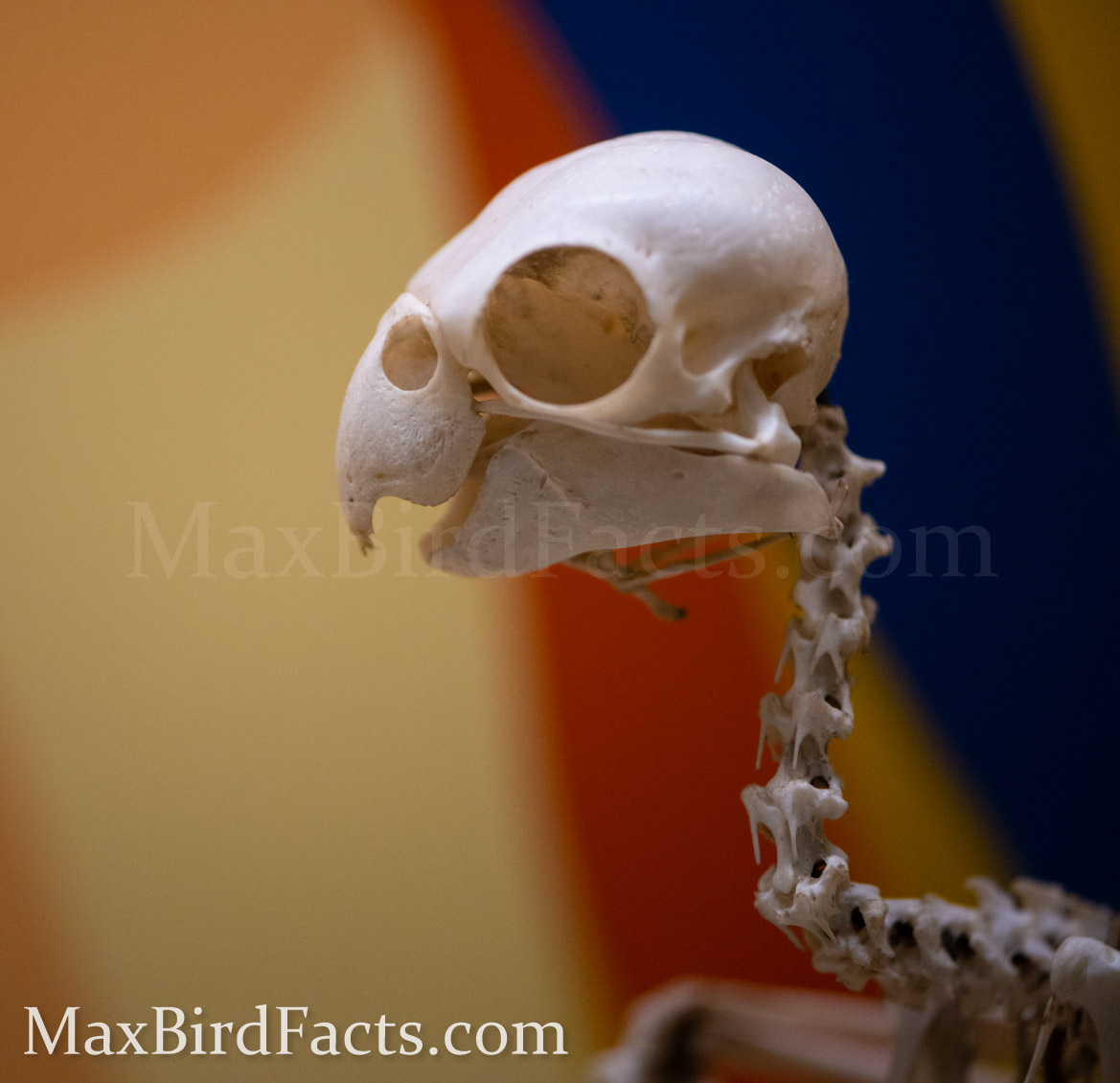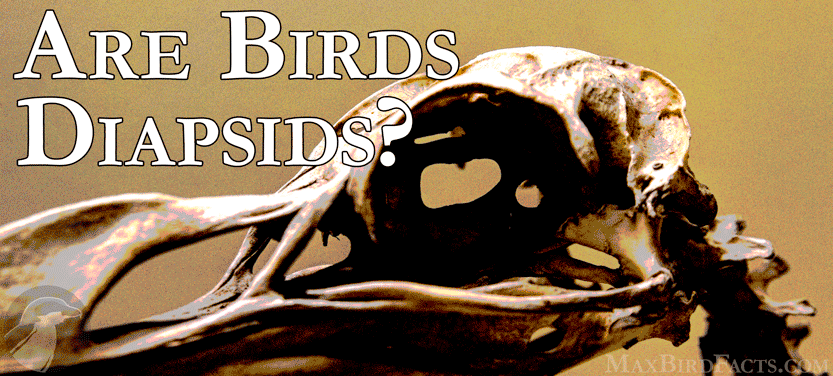Long story short, yes, birds are diapsids.
Birds are decedents of reptiles and possess the two necessary temporal fenestrae to fall under the definition of a diapsid.
But what exactly is a diapsid?
What Is A Diapsid – Making A Dinosaur
Merriam Webster’s definition of a diapsid is “of, relating to, or including reptiles (such as the crocodiles) with two pairs of temporal openings in the skull.”
Let’s break this definition down. The first and most important part is the relation to reptiles. To be a diapsid, that animal has to link to the reptilian family tree.
However, suppose you go far enough back in time. In that case, you can eventually find our connection to reptiles, but that doesn’t mean we humans are diapsids.
The second part of the definition helps clarify this by stating the need for “two pairs of temporal openings in the skull.” These openings, or fenestra, are the key distinguishing factor when looking at skulls of different classes of vertebrates.

Let’s look at the Tyrannosaur skull above. Starting at the base of the cranium and ending at the snout we have…
– Red = Supratemporal fenestra
– Blue = Infratemporal fenestra
– Green = Orbit
– Pink = Antorbital fenestra
– Purple = Antorbital fossa
– Yellow = Promaxillary fenestra
– Teal = Mandibular fenestra
– Orange = Nares
Here, the two regions we’re focused on are the supratemporal fenestra and infratemporal fenestra. The prefix supra– meaning “above” and infra– meaning “below,” are both followed by –temporal, which is the bone associated with these holes.
These voids reduce the skull’s weight and provide additional anchoring points for jaw muscles. These anchor points contribute to why T-Rex had the most powerful bite force for any animal that walked on Earth (that we know of).
Current research suggests some of these fenestrae were used as heat sinks for more active dinosaurs, saving them from overheating.
Dinosaurs are typically used as the case study for the diapsid skull design. So, why does Webster decide to use crocodiles as the example in their definition?
Crocodilians are one of the more ancient lineages of reptilians currently around. They retain the more basal traits of their original Archosaur ancestors.
They show excellent detail in their fenestrae, making them a perfect example for their definition and study. Moreover, since they are so similar to their ancestral roots, the crocodilian clade is one of the purest examples of reptilians.
But, I digress, this is an article about birds, not crocs.
Are Birds Diapsids? Technically, Yes
Birds are diapsids in the technical sense. Yes, they are decedents of reptiles. But as I said before, how far back do you have to go before the cutoff point for that classification?
The first ancestors of modern birds branched off from theropod dinosaurs somewhere between 75 to 65 million years ago.
This might seem like a long time ago, but from the time of the first birds to today is just 1.857% of the entire time life has been on our planet (~3.5 billion years). So in that sense, the emergence of modern birds has happened in the blink of an eye.

So, now that we see the relationship between birds and reptiles is comparatively close, what does diapsid translate to directly?
From Latin, di– is the prefix meaning “two,” and –apsid means “arch.” So, the literal translation from Latin to English of diapsid means “two arches.”
And this literal translation is where we start to have problems with birds fitting into the definition of a diapsid.
Birds are extraordinary animals to study, both in form and function. One of my favorite things to observe in avifauna is their constant strive for exceptional efficiency.
Throughout the millions of years they have existed, birds have evolved to fill nearly every niche available on the planet.
Arguably, the most important evolutionary step that birds have undergone is the ability to fly. However, this did come at the cost of reducing weight anywhere and everywhere they could for increased efficiency.
If you’ve read any of my other articles, you know I harp on the incredible efficiency of birds and the adaptations they have undergone to fill their lifestyles.
This need for more efficient flight came at the cost of a staggering amount of bone fusion and loss.
As a result, compared to other members of the Tetrapoda superclass, Aves has some of the most heavily modified skeletons, and the skull was no exception.
These weight savings caused birds to lose these arches on their skull. It’s almost as if the fenestrae that formed these arches in other diapsids has grown to the point where it has consumed the arch itself.
However, the bases of the arches are still visible on some modern species. Yet, they resemble more of a nub or ridge than anything else.
Part of the need for these reduced arches was to increase the available space for the braincase. This is because birds have quite large brains for their body size.
The massive cerebrum and optic lobe make up most of the brain matter, and for a good reason.

Birds are very well known for their keen eyesight, hence the term “eagle-eyed.” Spotting predators or prey from a long distance away is a tremendous advantage avians possess.
The cerebrum can (and eventually will) take up an entire article. Bird intelligence is a fascinating field that is finally gaining significant traction.
What we consider intelligence stems from the cerebrum, which can be split into lobes that control different functions.
Birds show an astounding level of intellect for the size of their brains. In addition, their cerebrum isn’t folded and is relatively smooth, making this even more intriguing.
The folds found in some mammalian brains create a greater surface area for neural activity and increases cognitive function in those species. Animals we associate with “higher intelligence” all have these folds: chimpanzees, dolphins, whales, and elephants. Some of these aspects of higher intelligence are long-term memory, tool use, social interactions, problem-solving, and many more.
What’s surprising is that many previously considered unintelligent birds show these traits of “higher intelligence.” There is nearly a complete 180° flip on the scientific stance on birds being foolish animals, to creatures conducting complex and extraordinary feats of cleverness and curiosity within the past half-century.
If you want to read more about the intelligence of birds, you should check out my article, Scrub-Jay Intelligence – Proving “Bird-Brained” is a Complement.

In any case, the increase in bone for birds’ braincases meant bone had to be reduced somewhere else in that region. By this time, birds had already moved away from teeth and opted for a lightweight keratin sheath over a bone core.
The loss of teeth would save birds a tremendous amount of weight but meant they couldn’t chew their food. This problem was solved simply enough by swallowing their prey whole, and utilizing a specialized organ, the gizzard, to emulate the act of chewing.
No longer needing the muscles to grind up vegetation or saw through flesh, it makes sense birds lost some of the extra muscle attachments for the jaw.
So, the loss of the arches formed by the supratemporal and infratemporal fenestrae didn’t truly cost birds anything they already had lost. In actuality, removing these arches allowed birds to become the brilliant fauna we love and study today.
Yes, Birds Are Diapsids!
Regardless of whether it’s a technical win, birds are still classified as diapsids and will remain so.
The origin of modern birds from theropod dinosaurs firmly cements their place within this group of animals, regardless of their lack of these “two arches.”
The shadow of these spindles of bone is still visible in modern birds as small protrusions at the base of the skull. These bumps of bone were initially the origins of the arches and are all that remain after millions of years of skeletal modification.

The loss of the supratemporal and infratemporal fenestrae was necessary for the bird’s brain to grow.
What was lost in these arches was gained by increasing the braincase’s size and gray matter itself.
The need for better eyesight and more complex cognitive functions outweighed the need for a more substantial bite. The increased cerebrum allowed birds to flex their mental might and flourish across the globe.
I had to dig through some of my Ornithology and Comparative Vertebrate Anatomy notes when researching this topic. It was a lot of fun bringing back memories of dissection labs and looking at bones in lectures.
This may have been a complex topic to cover, but I hope you learned something new after reading this article.
Make today great, and happy birding!
Max
